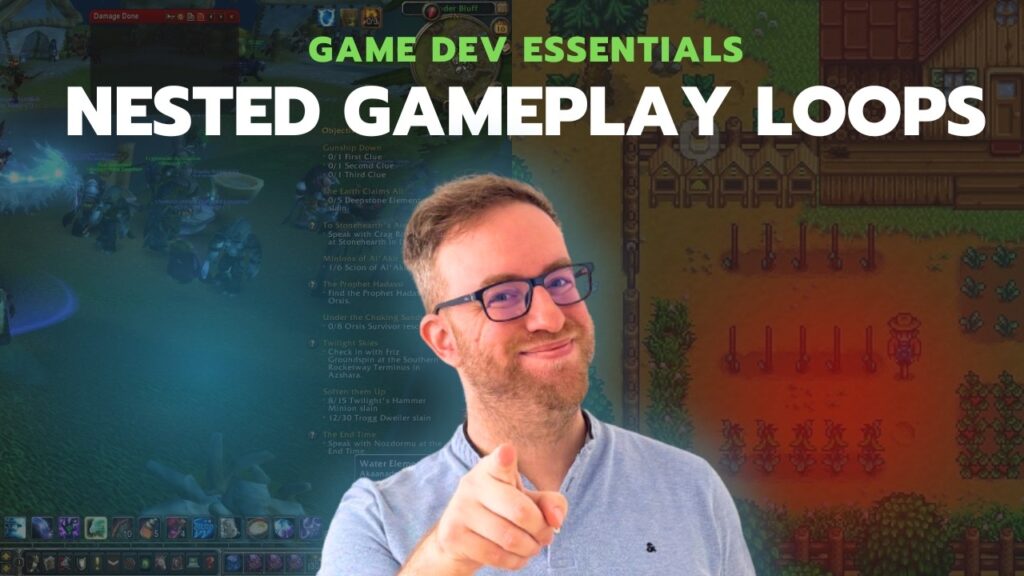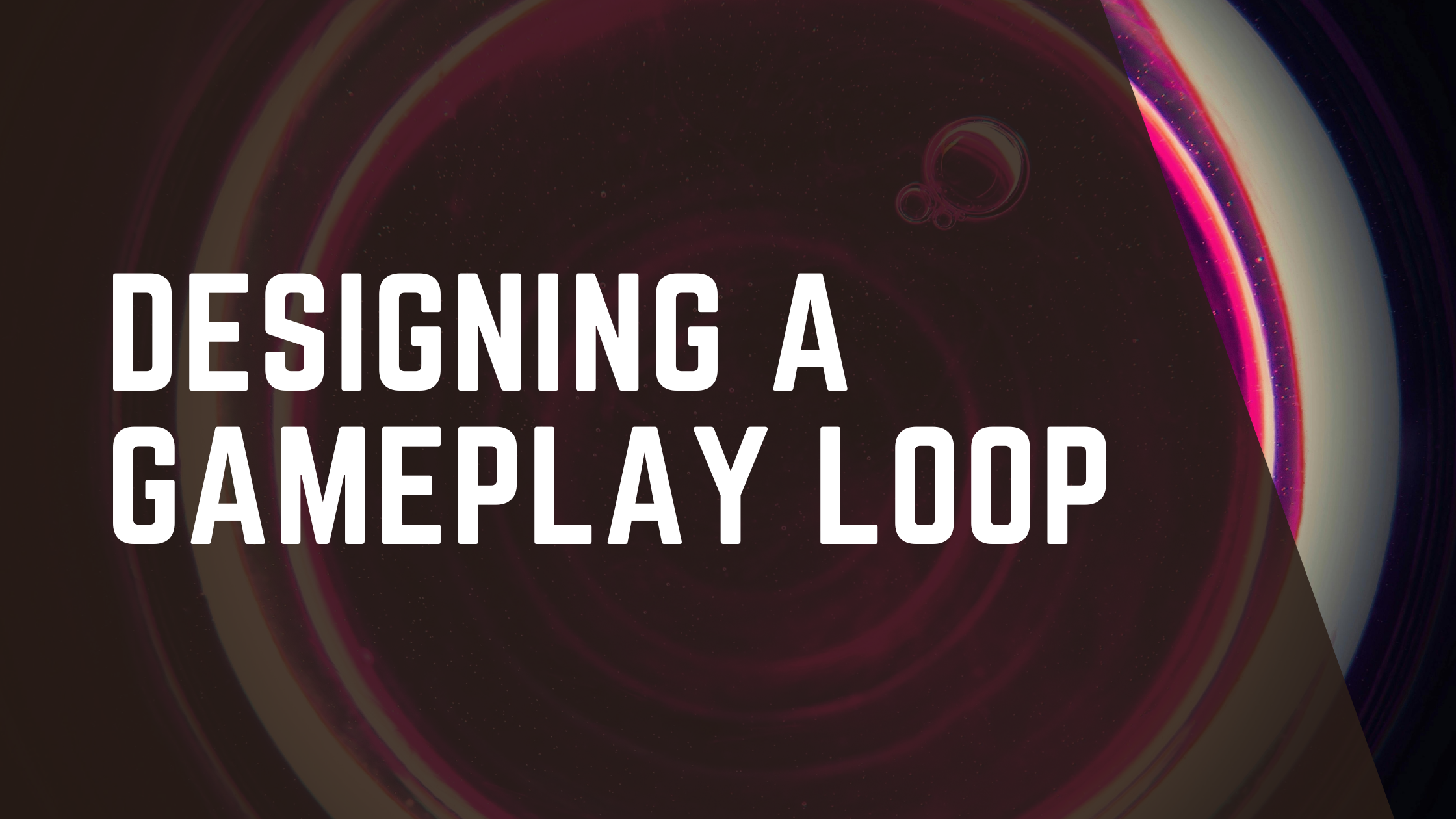Every game, from small indie puzzlers to massive AAA MMORPGs, are designed around one core tenant: the gameplay loop. But what is a gameplay loop? How is it different from the gameplay core? Loops are what keep players hooked, session after session.
In this guide, I’ll break down the meaning of the term gameplay loop, why it’s such a critical part of game design, and show you how to create one that’s simple, engaging, and endlessly replayable. By the end of this article, you’ll understand how to build loops that form the backbone of your game and keep players coming back for more.
What Is A Gameplay Loop?
At its simplest, a gameplay loop is the repeating cycle of actions that a player takes to move the game forward. You can think of it as do → get → upgrade → repeat. The player performs an action, receives some kind of reward or feedback, and then uses that outcome to fuel the next action. This cycle, repeated endlessly, is what creates engagement and rhythm in a game.
Why does this matter so much? Because the gameplay loop is the foundation of engagement, pacing, and retention. If the loop feels dull or repetitive without payoff, players won’t stick around, no matter how impressive the visuals or narrative are. A useful rule of thumb: if your core loop isn’t fun within the first five minutes, no amount of progression systems or polish will save the experience. You need to hone the loop until it’s fun immediately.

Breaking Down the Core Game Loop
To design a gameplay loop that actually works, you need to break it down into its essential parts. At the heart of every loop are four key elements: actions, feedback, rewards, and progression. Each one feeds into the next, creating the sense of flow that keeps players engaged.
Actions are the verbs of your game – the things players actively do. Jumping, shooting, building, exploring; whatever defines your genre. Actions are the raw inputs that give players agency, and they need to feel responsive and satisfying in their own right.
Feedback is how the game responds to those actions. This is where sound, visuals, and even haptic cues come into play. A punchy sound effect when you land a hit, a satisfying rumble when a block clears, or a glowing UI highlight when you complete a task: all of these signals tell the player their actions matter and are being noticed. Without clear feedback, actions feel hollow.
Rewards are what players get for taking action. These can be tangible, like loot, currency, or new skills – or intangible like story progression or the feeling of mastery. Rewards give players a reason to keep cycling through the loop, but they only work if they’re tied closely to the core actions.
Progression is how those rewards feed back into the next cycle. Upgraded weapons let you tackle harder enemies, skill points unlock new strategies, and story beats pull you into the next challenge. Progression closes the loop and pushes the player forward, turning one cycle into many.
You can see these elements clearly in classic examples. Tetris has a simple loop: place a block, clear lines, earn a higher score and then face a more difficult challenge as the pace increases. Diablo, on the other hand, builds a more elaborate loop: fight enemies, earn loot, upgrade your character and return to fight even stronger enemies. Both work because the actions are satisfying, the feedback is immediate and the rewards keep feeding into the next round.
Designing Loops That Engage
A strong gameplay loop doesn’t need to be complicated: it needs to be compelling. The best loops start simple, then layer in complexity over time. That’s where depth comes from: not by dumping hundreds of mechanics on the player at once, but by letting interactions between systems create new challenges and opportunities.
The intensity of your loop should also match your audience’s motivation. A puzzle game might focus on calm, repeatable actions with satisfying payoffs – while a competitive shooter thrives on high-stakes loops that demand quick reflexes and constant tension. Understanding what drives your players helps you design loops that speak directly to those needs.
The biggest trap for new developers is building what I call “empty loops.” These are cycles that technically repeat, but feel like chores rather than play. Think grinding for meaningless rewards, or repeating the same action with no variation or escalation. A loop like that doesn’t hold attention because the rewards don’t connect back to the fun of the core gameplay loop.
That’s why prototyping is so important. Before you build a full set of systems, test your loop in the simplest form possible. Even paper prototypes or stripped-down mechanics can reveal whether your loop feels satisfying or if it falls flat. If players aren’t enjoying the loop, you should fix it early.
Expanding Beyond the Core
Once your core game loop feels strong on its own, you can start layering in additional systems to give players longer-term goals and variety. These supporting loops help connect the short-term satisfaction of moment-to-moment play with a bigger sense of purpose.
Meta-progression systems are one of the most common examples. Skill trees, unlockable cosmetics, or narrative arcs provide a sense of growth that extends beyond a single session. Social loops can also expand engagement, whether it’s through leaderboards, multiplayer interactions or community-driven challenges. These don’t replace the core loop, rather, they amplify it.
The danger is letting these extra systems overshadow the gameplay core. If your meta-progression feels more rewarding than actually playing the game, you’ve created a treadmill rather than an engaging experience. Supporting loops should exist to highlight and reinforce what’s fun at the center, not distract from it.
Think of expansion as seasoning: just enough to enhance the flavor, not so much that it hides the main dish. If the smallest loop – the thing players repeat second to second – isn’t satisfying, no amount of progression layers will make the game truly engaging. Build outward carefully, and always keep the focus on the loop that hooked players in the first place.
Conclusion
At its core, the gameplay loop is deceptively simple: a repeating cycle that’s fun, rewarding, and motivating. When done right, it becomes the heartbeat of your game – the thing that keeps players coming back for one more run, one more fight, or one more puzzle.
The secret isn’t in piling on systems or chasing complexity. It’s in making the smallest loop so satisfying that players are eager to experience it again and again. From there, progression and supporting loops can expand that foundation, giving structure and long-term motivation without ever replacing the fun at the center.If you want players to stick around, respect their time, reward their curiosity, and make sure every cycle of play feels like it matters. Nail the core game loop first and you’ll have the perfect foundation to build a great game.


Leave a Reply